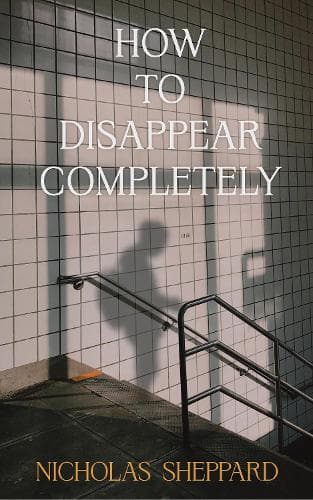Review: How To Disappear Completely
Reviewed by David Herkt
Moving with a relentless and increasing sense of foreboding, Nicholas Sheppard’s How to Disappear Completely is an extensive diagnosis of a disturbing disorder in recent American life. It is not a novel where the ends are neatly tied – instead it opens a social and psychological world to exploration.
Sheppard is an Auckland-based writer with dual American and New Zealand citizenship. His first novel, Broken Play, focused on a young sportsman struggling with his sexual identity. Sheppard is also a communications freelancer and a writer of editorial opinion for outlets in the international marketplace. How to Disappear Completely is very much a book of contemporary issues which has global aims.
The subject of serial killing has been familiar since the 19th Century when the sensational real-life murders of Jack the Ripper raised that sinister protagonist to cultural consciousness. The explosive phenomenon of a mass-killing, however, is much more recent. The sudden and unpredictable violence of multi-victim events at schools, universities, or workplaces has meant they have become the ultimate symptom of our times. They are a combination of both means and intent –automatic weapons allied with contemporary psychologies and social reactions.
There are frequent attempts to understand the impact of these incidents upon our society. Many books, documentaries and dramatised TV mini-series explore the reality: 101 Seconds: Terror at the Mall, A Killer on Floor 32, and New Zealand’s own Out of the Blue which focused on the 1990 Aramoana Massacre.
However, fiction provides another means of apprehension. Shooting massacres taking place in secondary or tertiary institutions have become the key reference – particularly for the United States, the Ground Zero of imagined depictions. Gus van Sant’s provocative 2003 movie Elephant or Jodi Picoult’s 2007 popular book Nineteen Minutes are two prime examples. Sheppard’s How to Disappear Completely is focused on two protagonists whose paths cross in the build-up to one such event at an American college.
Clayton is a young black social worker at the Hallworth social work agency in New Haven, Connecticut. He is following up on a woman’s phone call requesting a visit and its odd cancellation by her son a moment later. She has chronic fatigue syndrome and is one of his many clients. His roster includes a young woman from El Salvador who has escaped enforced prostitution but has found no alternative. One is newly divorced but is physically and psychically battered by her own angry teenager. Some of his clients are those who are simply old and lonely. Clayton is over-worked, part of a stressed social care system. His personal relationships are suffering.
Clayton’s home-visit to the woman with chronic fatigue syndrome is derailed by her twenty-something son at the door. He seems to be lying about her absence from the house. Clayton suggests a further follow-up visit when she is present and presses the young man into reluctant acceptance.
How to Disappear Completely presents a fulsome picture of an empathetic man working at the fractured face of his society. Clayton’s partner, Harriet, must deal with his physical and emotional exhaustion. She is also facing her own challenges as a student.
Clayton’s life is intercut – chapter alternating with chapter – with the experiences and thoughts of an unnamed young man. He is somehow preternaturally sensitive. The novel carefully reveals his childhood but by the time he reaches adolescence, his mother has succumbed to a psychological illness. He has increasingly become untethered from other meaningful real-life relationships.
There has been a girl, Katie, with whom he shared some especially vivid instants, but most of his meaningful personal interactions have been conducted through the flare of a computer screen. How to Disappear Completely presents contemporary life as a technologically mediated existence, where truth and appearance have equal value. Sheppard quotes many chatroom logs and web-site forum exchanges.
The unnamed protagonist is overwhelmed by social perspectives that range from the celibate ‘Incels’ to the repressive ‘alt-right,’ fuelled by the ready availability of pornography. How to Disappear Completely is unpleasantly descriptive at times, with its dictionary of historical incidents and virtual social roles as the novel builds to the climax which has been queasily signalled. A sudden cross-over in the book’s structuring also reveals where this young man fits into Clayton’s world – but not his name.
There can be no doubt that Sheppard can evoke this world in illuminating and sometimes fascinating detail. He has, however, a tendency to be programmatic, particularly when he has a thesis. There is an awkwardness between the two perspectives of the novel that only further emphases this fact. Each half could stand alone in its own right. The relationship between the two narratives does not feel integral – or entirely meaningful.
This structural disjunct comes eventually to dominate the reading and overwhelms each precisely chosen detail and revealed fact. There is a sense of box-ticking rather than discovery. It is a novel that aims high, is certainly of interest, but does not entirely achieve its ambition. The final uttering of the young protagonist’s name and its meaning within the novel’s context is something that each reader must resolve alone.
Reviewed by David Herkt
